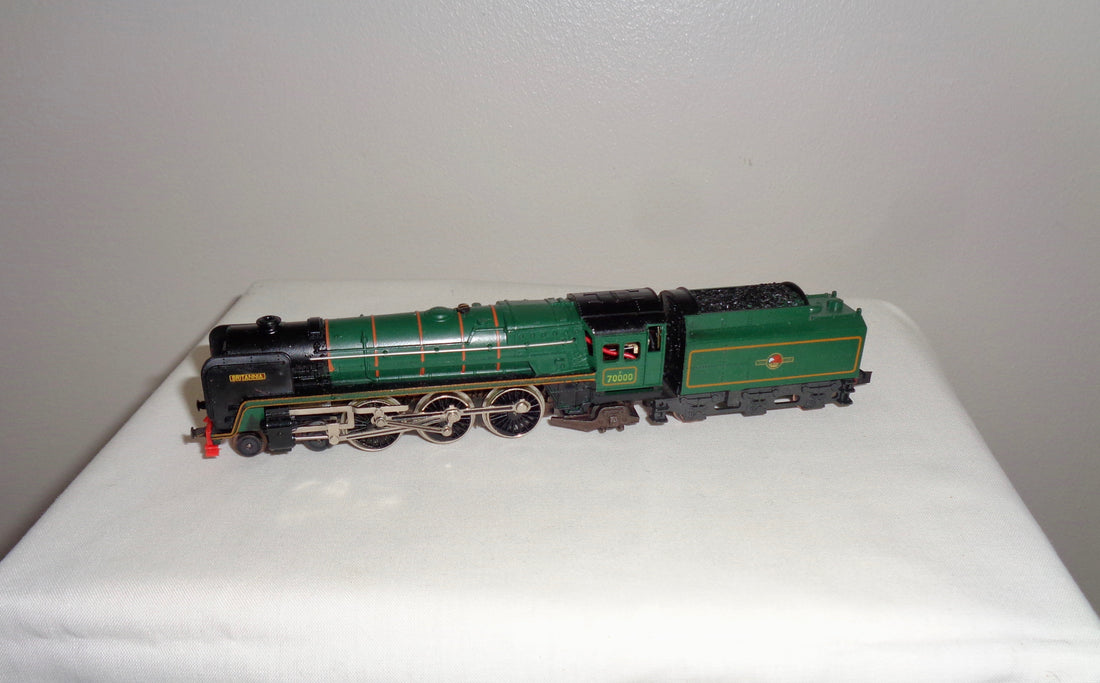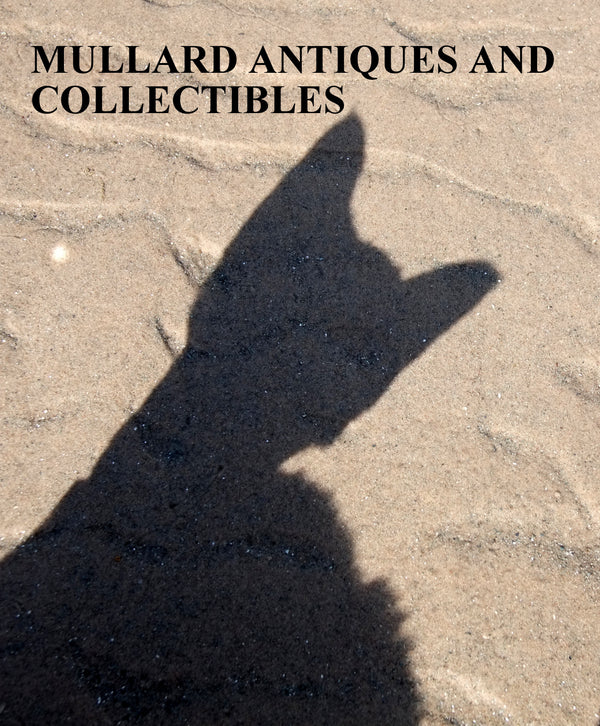
A Short Introduction to Vintage N-Gauge Model Railway
A Short Introduction to Vintage N-Gauge Model Railway
My love affair with vintage N-Gauge model railway started, like many hobbies, during childhood. One Christmas, as a young child, our parents bought us a secondhand remote-controlled Minic car race track and Minitrix train set. My Dad and brother played with the car race track; causing many arguments and tantrums on Christmas Day, and that was just from my usually mild-mannered Dad! In the end my Mum actually banned them both from playing but that’s another story… Anyway, since I never got a chance to race, I spent most of my time with the N- gauge Minitrix railway, building a simple track with two hemispheres and straight track before progressing to one with a bridge and junctions before running out of parts. My pre-teen pocket-money didn’t stretch to buying more track or trains…
I certainly can’t describe myself as an expert model railway collector or modeller but I still love model railways and the power they give for nostalgic reflection. I can watch spellbound for hours as the trains make their way around a track: it’s very therapeutic!
I decided to write this blog for people like me whom are interested in having an overview of N-gauge model railway. There is so much information that I’ve split it into separate blogs to make it easier to read! This is the first part. I’ve also included some links to websites for those whom would like to know more.
N-Gauge
British N-gauge is a model railway scale and gauge built to a scale of 1:148, with a track of 9 mm (0.354 in) width. The 9 mm (0.354 in) track width derives from a scale of 1:160 for 1,435 mm (4 ft 8 1⁄2 in) standard gauge rails.
As with most standards, nothing is quite as simple as it seems, particularly as standard track width varies from country to country!
- In the United Kingdom a scale of 1:148 is used for commercially produced models.
- In Japan, a scale of 1:150 is used for the models of 3 ft 6 in gauge trains, while a scale of 1:160 is used for models of standard gauge Shinkansen (Bullet Train) models.
- In the U.S. and Europe, a scale of 1:160 is used for models of trains, irrespective of the gauge of the real trains they are scaled from.
- All of these scales run on the same 9mm track gauge (N gauge). This means the track is a little too narrow for 1:148/1:150 but the difference is usually considered too small to matter. Strict 2mm fine scale modellers use slightly wider and usually hand-built track.
In Britain, some N scale models are built to “2 mm scale” for “2 mm to the foot” or 1:152. Early N scale was also known as “OOO” or “Treble-O” in reference to O scale|O and 00 gauge|00 and was also 1:152, but for a different reason.
Arnold
Trains and accessories of similar gauge and/or scale existed as early as 1927. However, the first modern N scale models were launched in 1962 by the Arnold company of Nuremberg.
Unlike other model railway gauges, N scale manufacturers quickly introduced standards which defined the gauge and voltage, as well as the height and type of couplers. For example, Arnold developed the “Rapido” coupler to provide a simple and robust releasable coupler design. This became the standard coupler design which was then adopted by other manufacturers albeit with some modifications to prevent patent infringement.
Triple-O

In 1961 a company called Lone Star introduced some of the very first (1:160) N scale models branded as Treble-O-Lectric (OOO) into the United Kingdom.
Lone Star was the name used by British company Die Cast Machine Tools Ltd (DCMT) for its toy products. DCMT was based in Welham Green, Hertfordshire, north of London.
Their original die-cast metal models, (produced in 1957), were push along and ran on a die-cast 8mm (0.315 inch) gauge track but were soon followed by electrified models and the tracks widened to ~ 9mm (0.354 inch).
OOO gearing, between the motor and the axles, was unusual in that it was done by rubber bands, rather than the usual worm gear!
Unfortunately, Treble-O-Llectric were not as commercially viable as N-gauge. The DCMT factory was demolished in 1984.
OO9

In the United Kingdom, modellers also produce layouts based on narrow gauge railways. The gauge ranges between 2 ft (610 mm) and 2 ft 6 in (762 mm), compared with a standard gauge of 4 ft 8 1⁄2 in.
Lynton & Barnstaple is a lovely example of a narrow gauge railway based in Devon, UK.
Modellers use a scale and gauge combination of 4mm scale and 9 mm (0.354 in) gauge tracks. This models a narrow track gauge of 2 ft 3 in (686 mm). Since the 9 mm(0.354 in) track gauge is used by N-gauge model railways, a selection of wheels and mechanisms is readily available. Effectively, in OO9 you have a OO gauge body running on an N gauge track!
San Diego Model Railroad Museum

One of the largest N-gauge layouts in the World is located at the San Diego Model Railroad Museum in California, U.S.A.
Pacific Desert Lines N-Scale model layout – is based on a rail line that was surveyed but never built. It comprises:
- 1,200 sq ft (110 m2) layout and features.
- Hand laid Code 40 track (0.040 inches – 1 mm high) and
- 33 scale miles (1,089 actual feet – 331 m) of mainline track!
The club members producing this N-Scale exhibit have won awards for their meticulous craftsmanship and attention to detail. For example, the model of San Diego’s Santa Fe depot was constructed using actual blueprints of the building. The Carlsbad power plant has fiber optic strobe lights on top of its chimney.
For those of us whom can only aspire to the N-Gauge layout at the museum, visit this website for some interesting layouts for inspiring modellers.
I hope that you have found this meander around N-gauge interesting and are now looking forward to my next blog on some of the Model Railway/ Railroad manufacturers?
I’m feeling quite sad, as I have finally decided to part with the remainder of my model railway collection… Please visit the following link to the model vintage railway section of our shop.


